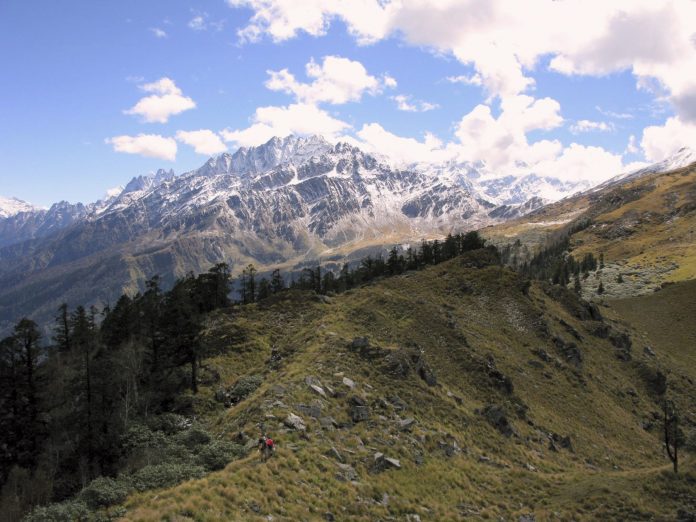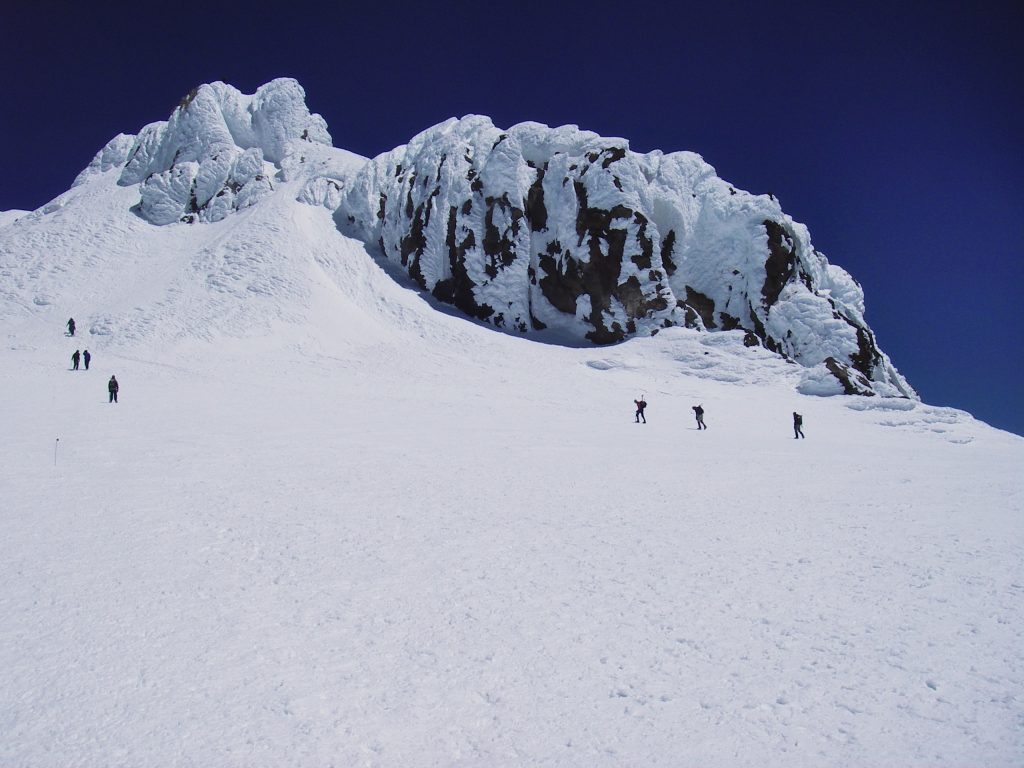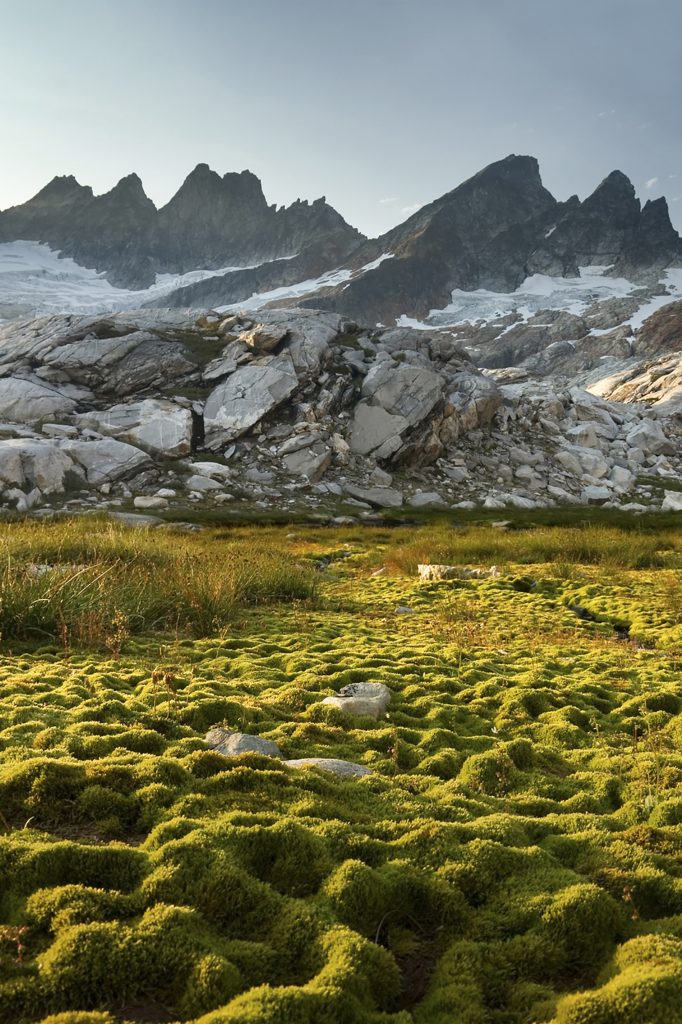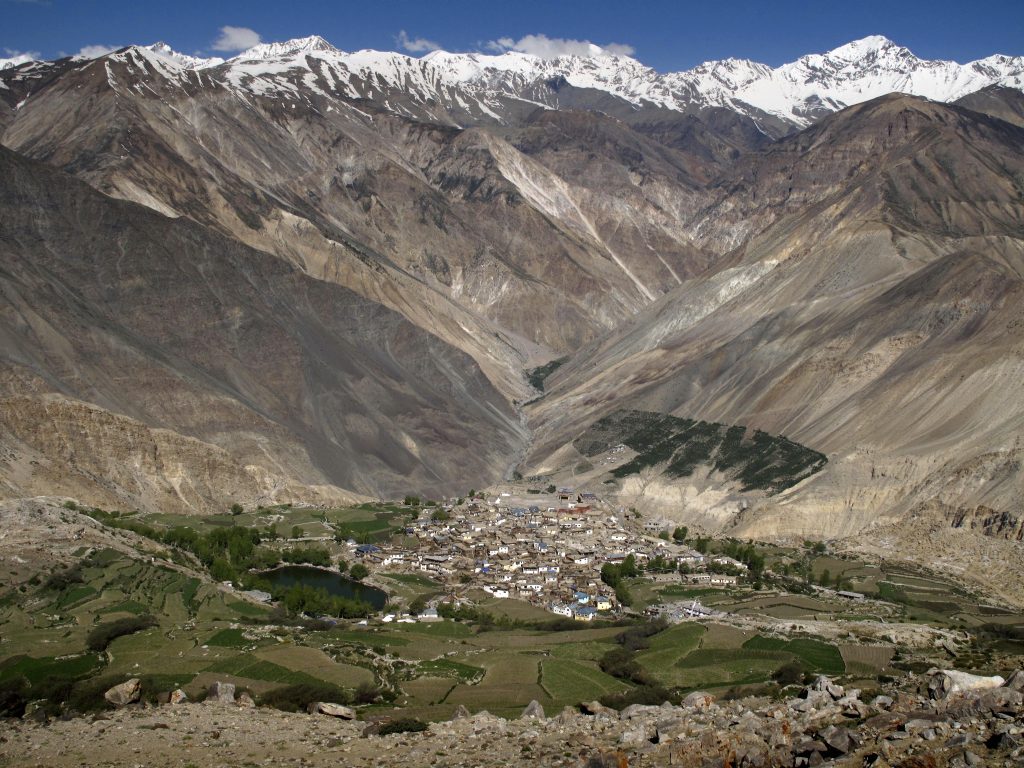
An uncertain fate for the alpine tundra as the Earth warms
By YD Bar-Ness
As the planet warms, the harsh conditions of the alpine zone are shrinking; where there was once ice, now there is green life. This process, analogous to the movement of vegetation towards the poles, is one direct manifestation of climate change. In the highest moiuntains of the world, these changes will fundamentally alter the ecosystem that we have become familiar with over the last few millennia.
Shifting Layers
A mountaintop can be thought of as an island in the sky, surrounded by a gaseous ocean of atmosphere. The vegetation and wildlife on the mountainside change with the temperature across different altitudes. At the low altitudes, conditions are warm and the forest dominates, but in the higher altitudes, cold and frozen rock prevail.
As our atmosphere changes towards greater levels of CO2 and consequently higher temperatures, these layers are shifting upwards. The forests are invading the alpine tundra, and the alpine tundra in turn is colonising recently-melted areas.
Like a rising ocean flooding a low-lying island, this is an existential threat to high-altitude organisms. Eventually, they will fail to thrive as the environment warms, or they will be outcompeted by the organisms adapted for gentler conditions below.

The Alpine Tundra
In an ecological band between forest and ice is where the resilient herbs and shrubs of the alpine zone can be found: the tundra. Derived from the Finnish word “tunturi”, tundra is a landscape of low plants that can survive extremely challenging conditions, such as freezing temperatures, scarce water supply and blasting solar radiation.
On these rocky heights “above tree-line”, the thin rocky soils and short growing seasons keep plants small and wizened, reminiscent of the Japanese art of bonsai arboriculture. A tiny woody shrub may be a very ancient plant that has survived centuries of harsh alpine challenges.
The plants of the tundra are usually low-lying and leathery-leaved, and these are adaptions that help them to survive windy and dry conditions.
Other, less obvious adaptions include wind-protective coatings of hairs, sunlight-dispersing red pigments, anti-freezing metabolic pathways and nutrient-storing underground roots.
In the tilted world of the mountain ranges, aspect and condition count for much. The location of shadows, watercourses, rock falls and wind pathways can determine which plants can survive where. For example, the plants that thrive in the hot midday rays of the sunny Northern Hemisphere’s southern-facing slopes may not survive the cold shadows of the northern faces.
In contrast to the fierce competitions between the different plants of the forests below, the living things of the alpine tundra are competing with the very nature of the mountain environment. In a high and glaciated mountain range such as the Himalayas or the Tian Shan, the limiting factor for tree growth is temperature; in other ranges it may be moisture availability or wind shelter. On very new mountains, such as recently-erupted volcanoes, the key factor might be the accumulation of organic soil.

Between Cryosphere and Forest
The alpine tundra is found in the mountains between the icy heights and the woody plants. However, over the course of different climatic periods, these environmental bands have shifted up and down with the changing temperatures.
The Earth’s stockpile of ice, or the cryosphere, is stored at the polar ice caps and the surrounding seasonal snows, and in the mountains as glaciers and snowpack. The glacier ice can carve mountains into fantastic shapes; the highest mountains on the planet have been scoured and sliced into sharp peaks and steep valleys. The accumulation in the ice caps and glaciers is inherited from the previous Ice Ages more than 20,000 years ago, but on a warming planet this stockpile is melting away.
The alpine tundra of today was ice-covered during the Ice Age and the forest tree-line was much lower. The Earth’s forests, by contrast, are concentrated at the equator of the planet and outwards to about 45 degrees north and south latitude. There, many plants feeding on sunlight have evolved firm wooden stems to lift them above their competitors. These multi-layered ecosystems are the most biodiverse regions of Earth, and are a much more hospitable environment for animal life.
The plants of the alpine tundra can be thought of as tenacious colonists from the lowlands. The forest below is the most exuberant concentration of life on Earth, whereas the frozen cryosphere is perhaps the most inhospitable.
Where is the Alpine Tundra?
The alpine tundra is found on mountain ranges worldwide, including the Himalayas, the Karakoram, the Tian Shan, the Indian Western Ghats, the European Alps, the Andes in South America, the North American Rockies and the Rwenzori in Uganda. It also occurs on isolated volcanic peaks, such as the Kilimanjaro in Tanzania or on the islands of Hawaii.
Isolated from the other alpine zones, each mountain can become its own island of biodiversity. Just as an oceanic island can become an incubator for distinct species, so can mountaintop alpine tundra. In the tropical zones, this unique character is enhanced. In the very high latitudes (like northern Russia, Canada and Scandinavia), the harsh conditions promote tundra at lower altitudes, but in contrast, the alpine zone in the tropics is only in the very highest of mountains and often lacks the snow and ice above. Tropical alpine terrain can contain species derived from both the tropical rainforests below and the higher-latitude forests toward the poles.

Danger from Above and Below
As the Earth’s climate changes, the alpine tundra is under threat from both above and below. The melting of snow and ice above will alter the flow of reliable water downhill. For forests and human settlements on the rivers below, rainfall will no longer be frozen on the mountain peaks to be distributed out over the warmer months. Instead, rainfall will make its way to the ocean much faster, paradoxically increasing the challenges of both flood and drought for the tundra and other ecosystems. Similarly, alpine plants dependent on locally-melting ice replenishing the soil will have to adapt to a changing melt pattern – or none at all.
From below, the warming conditions mean that more competitive organisms, such as pine trees, can move upwards into these harsh conditions. At the same time, the alpine organisms may find that they cannot tolerate the new environmental conditions. As the annual snowpack shrinks, small areas of terrain become available to the alpine tundra to colonise – but this mountaintop area is almost always smaller than the area of alpine tundra being outcompeted by plants from the forests below.
Inevitably, high-altitude ecosystems will have nowhere left to climb when the planet becomes too warm. Just as low-lying islands face an existential crisis from the rising ocean, so do these islands in the sky face an uncertain fate. In a future warmer world, the forests will retreat to lower altitudes and a new alpine tundra will develop composed of a different suite of plants.
For more stories and photos, check out Asian Geographic Issue 117.










